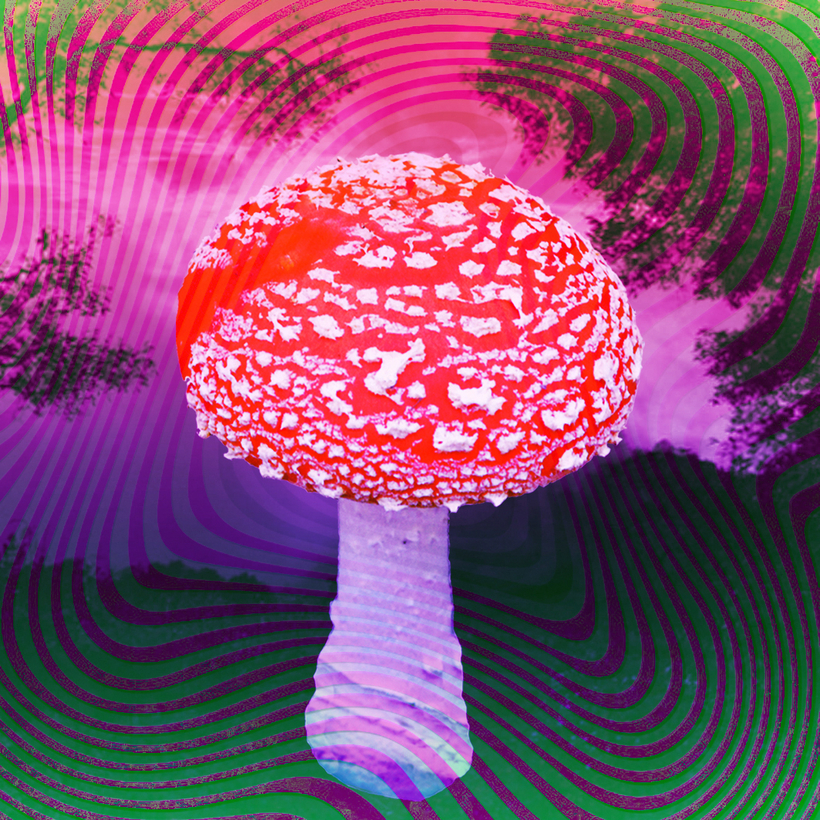In the early afternoon, clouds roll over the valley below San José del Pacifico, a tiny town in Mexico’s Oaxacan mountains. Refugio Terraza de la Tierra, a lone hotel, is perched just above the clouds. Up there, silence reigns. Waterfalls and wooden cabins dot the unassuming property, and a mud-hut restaurant lies at its heart.
Days at Refugio Terraza start at dawn, with a yoga session set against a backdrop of birdsong. Then a trip to one of the ancient sweat lodges, or temazcals, which are tucked among trees and lilies, or to a meditation cabin. Vegetables from the biodynamic garden are stewed in a large, brass bowl over an open fire for the day’s meals.

Lunch is at noon, and dinner is served at seven sharp. There is no electricity after dark. Guests sit in candlelight, and voices hardly rise above a whisper. The cursive Hindu “Om” ligature hangs ominously above the dining room, as does an almanac calendar.
A regular cabin at Refugio Terraza goes from $35 to $50 a night. The owner, Thomas Kok, a tall, elegant Danish man in his 50s, wears a robe and no shoes. He embodies hygge, the Scandinavian concept for enjoying life’s quieter pleasures.
When I first asked Kok about psychedelic mushrooms, during a recent stay at Refugio Terraza, he answered cryptically: “If it’s God’s will, they will come to you.”

God’s will or not, psychedelic mushrooms in San José del Pacifico are easy to find. Even the local grocery store sells small plastic cylinders of black pinheads for $50 a dose. (“It’s a rite which feels as old as time itself,” the grocery-store owner told me when I bought one.) This is because the town is Mexico’s mushroom mecca, where psychedelic variations of the San Isidro grow in the soil and are shipped off to all corners of the world.
Refugio Terraza sits just a few miles away from town. And despite the vegan food, the yoga, and the ancient steam rooms, this is no ordinary wellness retreat.
“God” to “Devil” and Back Again
In the 1500s, long before psilocybin, the psychedelic compound that naturally occurs in more than 200 species of fungi, became the booming commercial enterprise it is today, Spanish friars documented the activities of the curanderos, or shamans, in the Sierra Madre de Oaxaca. The Aztecs called teonanácatl—a specific mushroom in the mountains—the “flesh of the gods.” By the end of the 16th century, it was outlawed by Catholic colonizers, who called it the “flesh of the devil.”
In 1955, Robert Gordon Wasson, a banker from New York, took his wife, Valentina, a pediatrician, and his friend Allan Richardson, a society photographer, to Huautla de Jiménez, a Mexican town 200 miles north of San José del Pacifico, in the Sierra Mazateca area of Oaxaca.

There, on June 25, the trio embarked on their first mushroom trip, at the home of María Sabina, a Mazatec curandera known for her use of the hallucinogens. “They tasted bad—acrid with a rancid odor that repeated itself,” Wasson later wrote. “But our resolve soon melted before the onslaught of the mushrooms.… [Our visions] evolved into palaces with courts, arcades, gardens.”
Though Wasson had promised Sabina secrecy, back at the Century Club, in New York, he bragged about his Mexican adventures. A Life magazine editor offered him $8,500 to write a story about his experiences; “Seeking the Magic Mushroom” was published in 1957.
The story soon fell into the hands of Timothy Leary, a 40-year-old Harvard psychologist, who, inspired, traveled to Cuernavaca, south of Mexico City, to found the Harvard Psilocybin Project, with his colleague Richard Alpert, which administered psychedelics to students; among these drugs were LSD and psilocybin. (The project led to Leary’s and Alpert’s dismissals from Harvard in 1963. Nixon later labeled Leary as “the most dangerous man in America.”)

“Before Wasson, nobody took the children simply to find God,” María Sabina once lamented to researchers. “They were always taken to cure the sick.” When the West learned of magic mushrooms and hippies started flocking to the town, María Sabina was ostracized from the Mazatec community. After years of constant police raids, her house was burned down.
Despite psilocybin’s dark history, though, fringe groups in the West never stopped taking mushrooms. “It used to be just these small communities of people, you know, getting a tepee or whatever and pitching it in their house in Ibiza,” the former hippie George Davies, 65, says. “But now it’s fancy businesses organizing them.”
“Fancy” is putting it lightly. Today, we’re in the midst of a full-on psychedelic renaissance, backed by everyone from Queen Latifah to Gwyneth Paltrow. Plush hallucinogenic-mushroom retreats in Jamaica, Costa Rica, the Netherlands, and everywhere in between have become stylish to the point of being mainstream.
This is Mexico’s mushroom mecca, where psychedelic variations of the San Isidro grow in the soil and are shipped off to all corners of the world.
Prices for these experiences have followed suit. In British Columbia, a visit to the Journeymen Collective, a retreat for Silicon Valley C.E.O.’s, costs $16,000. Participants also have to identify their business goals before attending. “Then you travel to an undisclosed but very smart location in western Canada,” Will Pavia wrote last year in The Times of London, “down a cup of magic mushrooms and go on a ‘journey’ into the wilderness of your soul, guided by two Canadian shamans.” The shamans he describes don’t wear face paint, but rather stylish buzz cuts.
At Beckley Retreats, founded by Amanda Feilding, Countess of Wemyss and March, in Jamaica, a five-day stay at the colonial-style Good Hope Villas goes for a minimum of $5,500. Oak flooring and on-site infinity pools provide the backdrop for experiencing “the science-backed power of psilocybin ceremonies in a supportive retreat setting.”
A few miles away, in Treasure Beach, on the country’s southern coast, MycoMeditations offers a six-day retreat starting at $5,500. White-sand beaches, marble bathrooms, and body-centering massages by the nearby Rasta Wellness Centre are all amenities available to guests.
Other, more informal retreats that often aren’t backed by licensed psychotherapists abound, in places like Tulum, Mexico, and Santa Cruz, California.
“No C.E.O. wants the mosquito jungle shamanic context,” Jonathan de Potter, the founder of Behold Retreats, in Portugal, and a former employee of consulting giant Accenture, tells me. “We did a $50K retreat for a Texas C.E.O. and his girlfriend in a massive beachfront villa in Tulum, for example.”

“I know one guy who has a center in northern Baja that offers many substances, mushrooms included,” Daniel Ferguson, a filmmaker working on a documentary on psilocybin, tells me. “He charges $50K a month for his treatments.”
While the waiting list for these retreats is sometimes years long, and the price points are now all but prohibitive, San José del Pacifico, in the Oaxacan mountains where it all began, has been left to the backpackers.
“Up there, it’s the same as it used to be,” Augusto Armadore, a Canadian restaurateur who now lives on the coast in nearby Zipolite, said. “Mushrooms are sacred.”
At Refugio Terraza de la Tierra, I took mushrooms in one of the meditation shacks with a curandero. It cost me $100 in total. I saw the same angular shapes, courtyards, and palaces that Wasson described all those years ago.
Elena Clavarino is the Senior Editor for AIR MAIL


